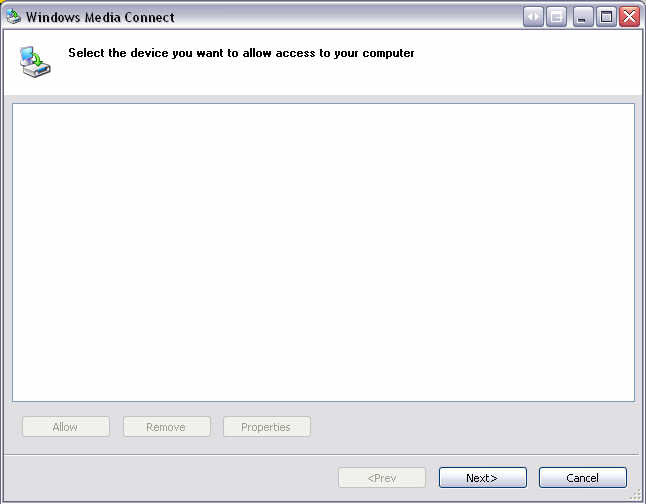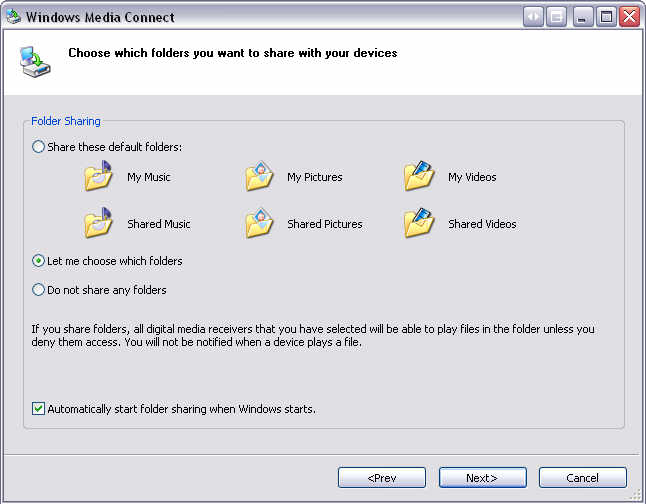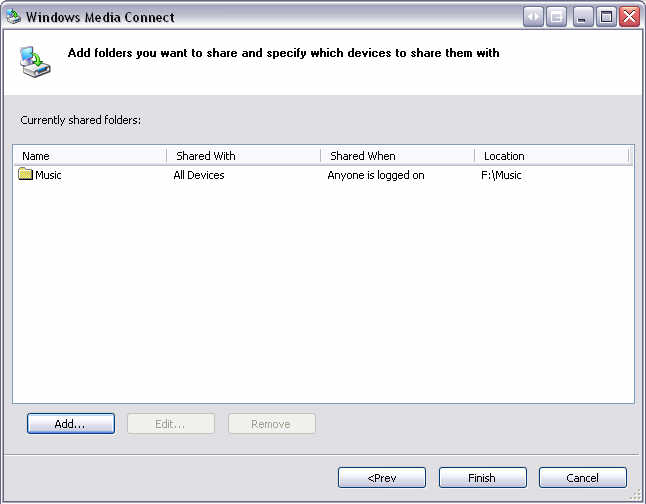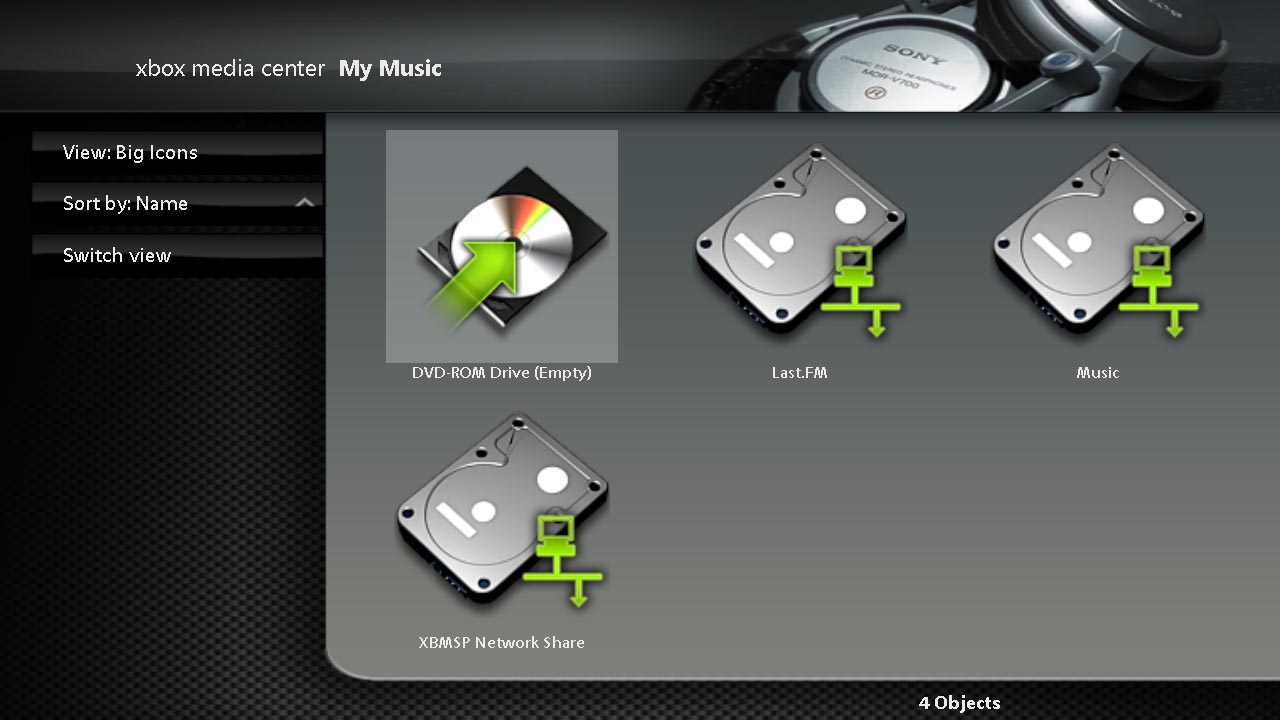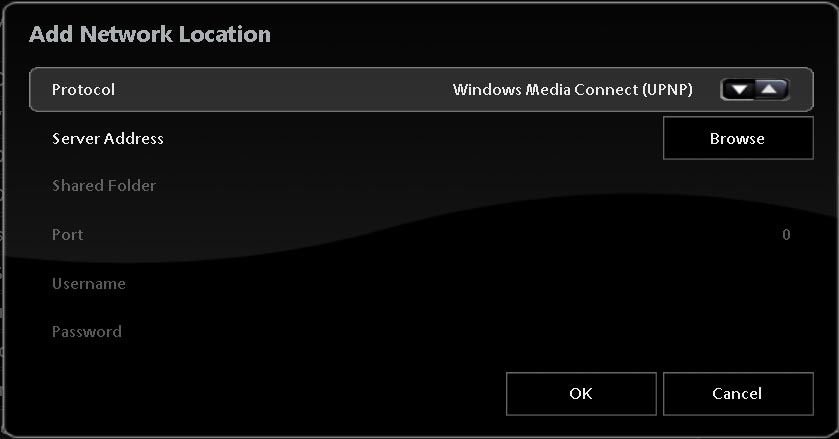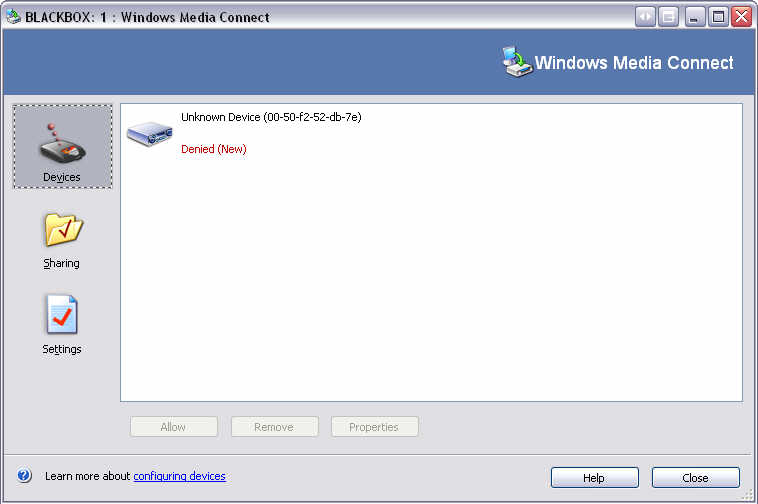Archive:UPnP/Media source: Difference between revisions
>UPnP4XBMC No edit summary |
>UPnP4XBMC No edit summary |
||
| Line 2: | Line 2: | ||
==UPnP introduction== | ==UPnP introduction== | ||
UPnP (short for "Universal Plug and Play") is a set of computer network protocols from the [http://www.upnp.org UPnP Forum]. The goals of UPnP are to allow devices to connect seamlessly and to simplify the implementation of networks in the home and corporate environments. UPnP achieves this by defining and publishing UPnP device control protocols built upon open, internet-based communication standards, (which means that any devloper/programmer can make a device or software for any operating-system/platform in any program-language by folling the UPnP | UPnP (short for "Universal Plug and Play") is a set of royalty-free computer network protocols from the [http://www.upnp.org UPnP Forum]. The goals of UPnP are to allow devices to connect seamlessly and to simplify the implementation of networks in the home and corporate environments. UPnP achieves this by defining and publishing UPnP device control protocols built upon open, internet-based communication standards, (which means that any devloper/programmer can make a device or software for any operating-system/platform in any program-language by folling the UPnP standards and it will automaticly be compatible with all other UPnP devices). | ||
==UPnP in XBMC== | ==UPnP in XBMC== | ||
XBMC has (since the 10 of July 2006) a built-in UPnP-client (a so called "UPnP MediaRenderer") which can auto-detect any UPnP-server (a so called "UPnP MediaServer") on your local-network, as long as that UPnP-server is not behind a firewall or you have opened the ports for UPnP in your firewall. You can very simply add one or more UPnP shares via the "'''Add Source'''" function with the context-menu (white-button on your controller) in XBMC under each of the the My Pictures/My Videos/My Music sections. | XBMC has (since the 10 of July 2006) a built-in UPnP-client (a so called "UPnP MediaRenderer" device) which can auto-detect any UPnP-server (a so called "UPnP MediaServer" device) on your local-network, as long as that UPnP-server is not behind a firewall or you have opened the ports for UPnP in your firewall. You can very simply add one or more UPnP shares via the "'''Add Source'''" function with the context-menu (white-button on your controller) in XBMC under each of the the My Pictures/My Videos/My Music sections. | ||
| Line 13: | Line 13: | ||
* [http://www.microsoft.com/windows/windowsmedia/devices/wmconnect/default.aspx Windows Media Connect], Microsoft's free UPnP MediaServer for Windows. | * [http://www.microsoft.com/windows/windowsmedia/devices/wmconnect/default.aspx Windows Media Connect], Microsoft's free UPnP MediaServer for Windows. | ||
* [http://www.slimdevices.com/su_downloads.html Slimserver]: a free open source UPnP MediaServer from Slim Devices for Windows, Linux and Mac OSX. | * [http://www.slimdevices.com/su_downloads.html Slimserver]: a free open source UPnP MediaServer from Slim Devices for Windows, Linux and Mac OSX. | ||
* [http://www.rhapsody.com Rhapsody], by [http://www.real.com/rhapsody | * [http://www.rhapsody.com Rhapsody], by [http://www.real.com/rhapsody RealNetworks], a commercial Media Control/Renderer/Server for Windows and Macintosh. | ||
* [http://www.allegrosoft.com/ams.html Allegro Media Server], a free closed source UPnP MediaServer for Windows and Macintosh. | * [http://www.allegrosoft.com/ams.html Allegro Media Server], a free closed source UPnP MediaServer for Windows and Macintosh. | ||
* [http://www.twonkyvision.com TwonkyVision], by TwonkyMedia, a free closed source UPnP Media Server for Windows and Linux. | * [http://www.twonkyvision.com TwonkyVision], by TwonkyMedia, a free closed source UPnP Media Server for Windows and Linux. | ||
| Line 31: | Line 31: | ||
*Windows Media Connect from Microsoft, available [http://www.microsoft.com/windows/windowsmedia/devices/wmconnect/default.aspx here] or [http://www.softpedia.com/get/Internet/File-Sharing/Windows-Media-Connect.shtml here]. | *Windows Media Connect from Microsoft, available [http://www.microsoft.com/windows/windowsmedia/devices/wmconnect/default.aspx here] or [http://www.softpedia.com/get/Internet/File-Sharing/Windows-Media-Connect.shtml here]. | ||
The first step is to download and install Windows Media Connect on your computer. This easy-to-use software allows you to share media (pictures, videos, music/audio) on your PC using the UPnP protocol, which is also supported by many | The first step is to download and install Windows Media Connect on your computer. This easy-to-use software allows you to share media (pictures, videos, music/audio) on your PC using the UPnP protocol, which is also supported by many stand-alone network players. | ||
{| | {| | ||
| | | | ||
| Line 81: | Line 81: | ||
==Developers notes on UPnP== | ==Developers notes on UPnP== | ||
If you are a C/C++ programmer and like to make a UPnP MediaServer or improve on XBMC's UPnP MediaRenderer (or even add new UPnP features to XBMC) then we recommend you checkout the [http://sourceforge.net/projects/platinum Platinum UPnP SDK], available on SourceForge.net. Platinum UPnP SDK is a free and open source software development kit that let you easily create a UPnP MediaServer or MediaRenderer, it also happens to be from this SDK that XBMC got its client code from, (XBMC's UPnP MediaRenderer was also firstly implemented into XBMC by the author of the Platinum UPnP SDK, [http://www.plutinosoft.com Sylvain a.k.a. c0diq]). You should also visit the official [http://www.upnp.org UPnP™ Forum]. Other good links for developers can be found at the bottom of the [http://en.wikipedia.org/wiki/Upnp UPnP article on Wikipedia]. | If you are a C/C++ programmer and like to make a UPnP MediaServer or improve on XBMC's UPnP MediaRenderer (or even add new UPnP features to XBMC) then we recommend you checkout the [http://sourceforge.net/projects/platinum Platinum UPnP SDK], available on SourceForge.net. Platinum UPnP SDK is a free and open source software development kit that let you easily create a UPnP MediaServer or MediaRenderer, it also happens to be from this SDK that XBMC got its client code from, (XBMC's UPnP MediaRenderer was also firstly implemented into XBMC by the author of the Platinum UPnP SDK, [http://www.plutinosoft.com Sylvain a.k.a. c0diq]). You should also visit the official [http://www.upnp.org UPnP™ Forum]. Other good links for developers can be found at the bottom of the [http://en.wikipedia.org/wiki/Upnp UPnP article on Wikipedia]. | ||
UPnP is the future of networked entertainment and are leading the way to an interconnected lifestyle. The [http://www.upnp.org UPnP™ Forum] currently consists of almost 800 members (which consists of vendors, industry leaders in consumer electronics, computing, home automation, home security, appliances, printing, photography, computer networking, and mobile products), including companies such as; Microsoft, Intel, AMD, Adobe, Belkin, Cisco, LinkSys, D-Link, 3com, Fujitsu, IBM, NEC, RealNetworks, ReplayTV, ...and many, many more huge coperations. | |||
PS! Feature request to any willing developers out there; "[http://www.upnp.org/standardizeddcps/remoteui.asp UPnP Remote User Interface Client]" support in XBMC, so that XBMC could control UPnP MediaServers which also has a "[http://www.upnp.org/standardizeddcps/remoteui.asp UPnP Remote User Interface Server]" such as HTPC applications like SnapStream BeyondTV (and possible MediaPortal in the future) and other PVR softwares/devices, (control functions and commands such as record, schedule, play, pay, stop, fast-forward, etc.) | |||
Revision as of 10:25, 11 July 2006
UPnP media sharing is an extremely easy method of sharing your media (pictures/video/audio) on your network as it features automatic-discovery and does not require any configuration.
UPnP introduction
UPnP (short for "Universal Plug and Play") is a set of royalty-free computer network protocols from the UPnP Forum. The goals of UPnP are to allow devices to connect seamlessly and to simplify the implementation of networks in the home and corporate environments. UPnP achieves this by defining and publishing UPnP device control protocols built upon open, internet-based communication standards, (which means that any devloper/programmer can make a device or software for any operating-system/platform in any program-language by folling the UPnP standards and it will automaticly be compatible with all other UPnP devices).
UPnP in XBMC
XBMC has (since the 10 of July 2006) a built-in UPnP-client (a so called "UPnP MediaRenderer" device) which can auto-detect any UPnP-server (a so called "UPnP MediaServer" device) on your local-network, as long as that UPnP-server is not behind a firewall or you have opened the ports for UPnP in your firewall. You can very simply add one or more UPnP shares via the "Add Source" function with the context-menu (white-button on your controller) in XBMC under each of the the My Pictures/My Videos/My Music sections.
Compatible UPnP MediaServers (UPnP-servers)
UPnP MediaServers are available for most operating-systems, examples are:
- Windows Media Connect, Microsoft's free UPnP MediaServer for Windows.
- Slimserver: a free open source UPnP MediaServer from Slim Devices for Windows, Linux and Mac OSX.
- Rhapsody, by RealNetworks, a commercial Media Control/Renderer/Server for Windows and Macintosh.
- Allegro Media Server, a free closed source UPnP MediaServer for Windows and Macintosh.
- TwonkyVision, by TwonkyMedia, a free closed source UPnP Media Server for Windows and Linux.
- TVersity, a free closed source UPnP AV Media Server for Windows.
- On2Share, a commercial MediaServer UPnP AV MediaServer plugin for MCE (Microsoft Windows Media Center).
- SnapStream BTV/BeyondTV, a commercial Media Control/Renderer/Server and PVR for Windows.
- Cyberlink PowerCinema, a commercial Media Control/Renderer/Server for Windows.
- ushare, a free open source UPnP Media Server for Linux and NSLU2.
- mediatomb, a free open source UPnP Media Server for Linux.
- PyMedS, a free open source Python UPnP MediaServer.
- AwoX, provides a family of commercial UPnP products and solutions.
Installing and Configuring Windows Media Connect on your PC
This step-by-step tutorial will walk you through the installation and setup of Windows Media Connect, a free UPnP MediaServer for Windows. In order to use this option, you need to have the following:
The first step is to download and install Windows Media Connect on your computer. This easy-to-use software allows you to share media (pictures, videos, music/audio) on your PC using the UPnP protocol, which is also supported by many stand-alone network players.
|
After installing Windows Media Connect, simply run the included setup utility included with it. The first screen that appears should look something like the one to the right. For now, simply choose Next. |
|
The next step is to choose which folders are going to be shared with XBMC. It offers you the option of using the default folders. In this case, we are going to choose which folders to share. |
|
Next, choose the folders that you would like to share, by selecting Add and choosing as many folders as you like. You can share entire drives or just individual folders. In this example, I have shared my Music folder. |
Configuring UPnP Shares in XBMC is as easy as setting up any other type of share. In this example, we are going to add the Music folder shared above to My Music, although you can use the exact same procedure to add a share to My Videos or My Pictures.
|
First, open My Music. Your screen should look something like the one displayed to the right, although your shares may be different. |
|
Then, open the context menu by pressing the White button on your controller and select Add Source. |
|
Then choose Browse and then Add Network Location. Choose Windows Media Connect as the Protocol and then Browse for the Server Address. Select the UPnP:// option and then you should see your computer's name. Select your computer and at this time, a help balloon should appear in the tray on your computer advising you that a new device has been connected. |
|
You should see Unknown Device appear, as is displayed to the left. Select the device and choose Allow. |
Developers notes on UPnP
If you are a C/C++ programmer and like to make a UPnP MediaServer or improve on XBMC's UPnP MediaRenderer (or even add new UPnP features to XBMC) then we recommend you checkout the Platinum UPnP SDK, available on SourceForge.net. Platinum UPnP SDK is a free and open source software development kit that let you easily create a UPnP MediaServer or MediaRenderer, it also happens to be from this SDK that XBMC got its client code from, (XBMC's UPnP MediaRenderer was also firstly implemented into XBMC by the author of the Platinum UPnP SDK, Sylvain a.k.a. c0diq). You should also visit the official UPnP™ Forum. Other good links for developers can be found at the bottom of the UPnP article on Wikipedia.
UPnP is the future of networked entertainment and are leading the way to an interconnected lifestyle. The UPnP™ Forum currently consists of almost 800 members (which consists of vendors, industry leaders in consumer electronics, computing, home automation, home security, appliances, printing, photography, computer networking, and mobile products), including companies such as; Microsoft, Intel, AMD, Adobe, Belkin, Cisco, LinkSys, D-Link, 3com, Fujitsu, IBM, NEC, RealNetworks, ReplayTV, ...and many, many more huge coperations.
PS! Feature request to any willing developers out there; "UPnP Remote User Interface Client" support in XBMC, so that XBMC could control UPnP MediaServers which also has a "UPnP Remote User Interface Server" such as HTPC applications like SnapStream BeyondTV (and possible MediaPortal in the future) and other PVR softwares/devices, (control functions and commands such as record, schedule, play, pay, stop, fast-forward, etc.)
